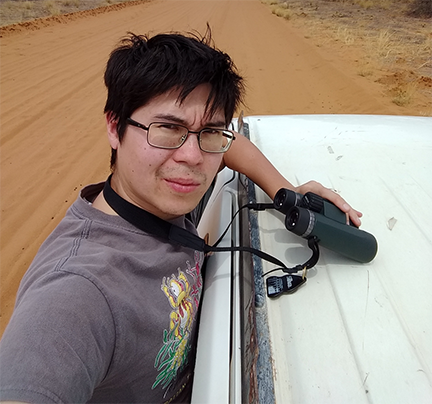
You've probably seen them hovering over flowers, which is why syprhids are commonly called "hover flies" or "flower flies."
Enter Andrew Young.
He's a UC Davis postdoctoral researcher with the Department of California Food and Agriculture (CDFA) and he researches syrphids.
Young, who specializes in Diptera taxonomy and phylogenetics at CDFA, will present a seminar to the UC Davis Department of Entomology and Nematology on "The Natural History of Syrphidae: from Pollinators to Parasitoids" at 4:10 p.m., Wednesday, Feb. 5 in 122 Briggs Hall, off Kleiber Hall Drive.
"Syrphidae (Dlptera) is a species-rich family of true fly, with over 6200 described species worldwide," he says in his abstract. "Often known as flower flies or hover flies, syrphlds are likely the most significant group of pollinators outside of the bees--especially in Arctic climates. While research into their pollination-related behavior is still nascent, other aspects of flower fly biology have been relatively well-studied."
"Adults of many species are well-known for their impressive mimicry of stinging Hymenoptera, and known larvae display a degree of habitat diversity that is unusually broad for a single family of Diptera. Many larvae are predators on soft-bodied insects such as aphids, and therefore, show potential for crop-pest management, while others are aquatic filter-feeders that may have value in waste-management applications." (See UC Integrated Pest Management Program website on syrphids; in their larval stage, they feed on aphids.)
Young says he will give an overview of the current understanding of flower fly phylogeny, followed by an exploration of the varied many adult and larval natural histories known to the group. He will emphasize "many of the little-known larval life histories that are still actively being discovered by dedicated field researchers. I will conclude by briefly discussing some of my past, present and future flower fly research."
Young studied Syrphidae in the lab of Stephen Marshall, professor of entomology at the University of Guelph, Ontario, Canada. Marshall and Young are among the six co-authors of Field Guide to the Flower Flies of Northeastern North America" (Princeton University Press, 2019), a book described as "a groundbreaking guide to flower flies in North America."
From the Princeton University Press website: "Flower flies are, along with bees, our most important pollinators. Found in a varied range of habitats, from backyard gardens to aquatic ecosystems, these flies are often overlooked because many of their species mimic bees or wasps. Despite this, many species are distinctive and even subtly differentiated species can be accurately identified." The guide includes more than 3,000 color photographs and 400 maps, covering all 416 species of flower flies that occur north of Tennessee and east of the Dakotas, including the high Arctic and Greenland. Each species account provides information on size, identification, abundance, and flight time, along with notes on behavior, classification, hybridization, habitats, larvae, and more."
Lynn Kimsey, director of the Bohart Museum of Entomology and professor of entomology at UC Davis, is the seminar host. Community ecologist Rachel Vannette, assistant professor, coordinates the weekly seminars.
Upcoming seminars for the winter quarter (See speaker list) are at 4:10 p.m. on Wednesday in 122 Briggs Hall.
Wednesday, Feb. 12
Kevin Rice, University of Missouri, Columbia
Topic: "Lasers, Drones, and Growth Promoting Fungus: New Technologies for IPM"
Host: Ian Grettenberger, assistant professor
Wednesday, Feb. 19
Mercedes Burns, University of Maryland,>Baltimore County
Topic: (pending) She studies evolutionary ecology of reproductive traits and behaviors, sexual conflict, reproductive polymorphism, arthropod biology
Host: Jason Bond, professor and Schlinger Chair in Insect Systematics
Wednesday, Feb. 26:
Faculty Flash Talks (featuring faculty members Rachel Vannette, Ian Grettenberger, Shahid Siddique, Geoffrey Attardo, Jason Bond)
Wednesday, March 4
Brendon Boudinot, doctoral candidate, Phil Ward lab, exit seminar
Topic: "Morphology and Evolution of the Insects, and the Ancestors of the Ants"
Host: Phil Ward, professor
Attached Images:
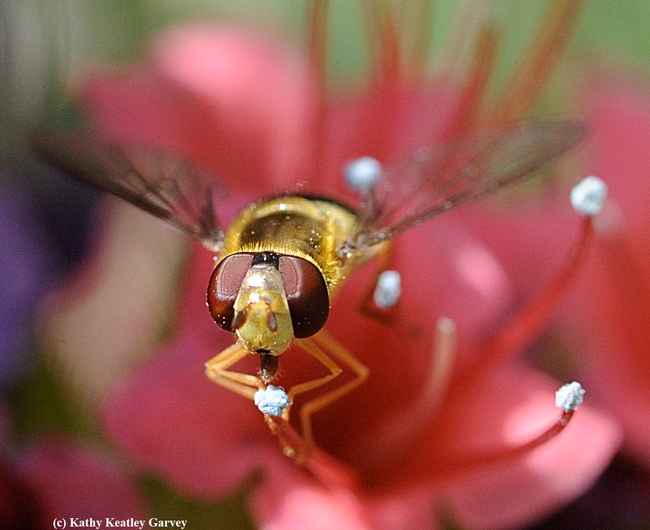
A syrphid, also known as a hover fly or flower fly, nectars on a tower of jewels, Echium wildpretii, in Vacaville, Calif. (Photo by Kathy Keatley Garvey)
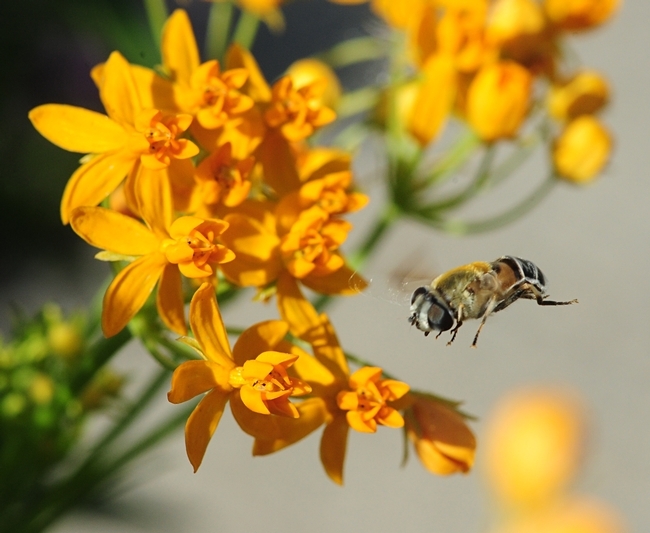
A syrphid in flight, heading toward a tropical milkweed, Asclepias curassavica. (Photo by Kathy Keatley Garvey)
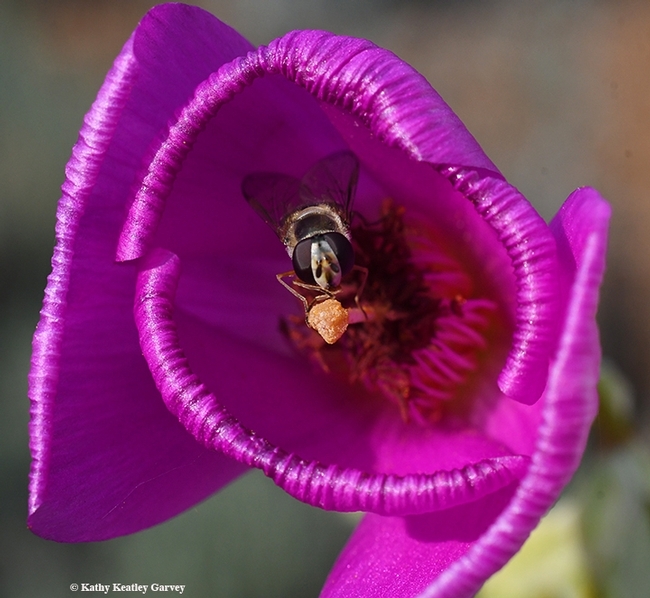
A syrphid tucked inside the petals of a rock purslane, Calandrinia grandiflora. (Photo by Kathy Keatley Garvey)
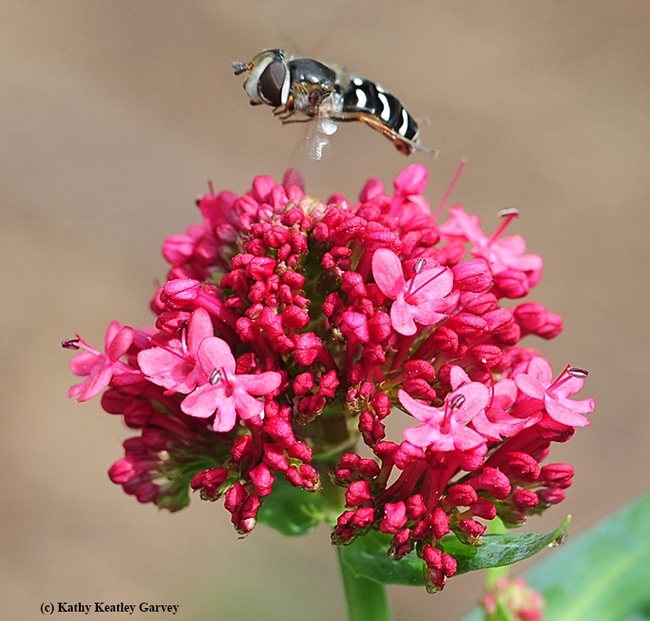
A syrphid hovers over Jupiter's Beard, Centranthus ruber. (Photo by Kathy Keatley Garvey)